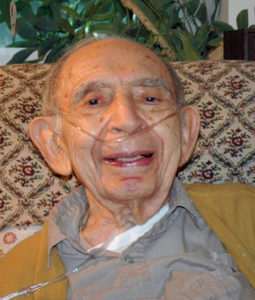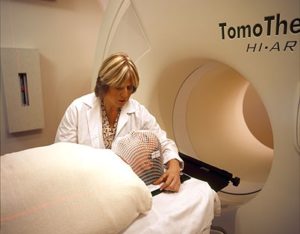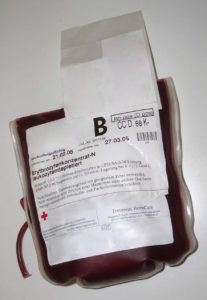
We talk a lot about comfort measures in end of life care. After discussing the futility of further treatments, conversation moves to those measures intended to give the very best quality of life possible for the time remaining.
When hospice care gets involved, those conversations also often have an elephant sized unspoken criteria sitting in the room – costs. Since the hospice care provider is responsible for all costs associated with the terminal diagnosis, keeping those costs down is a major goal. This is not straightforward profit-seeking and greed, either. We are all aware of how breathtakingly expensive medical treatments and drugs can be, and any organization that spends more than they take in is not around to provide services for long.
In my experience, this cost savings goal has led to some mythology in hospice care that needs to be addressed. I have had mutually exclusive teaching and instructions from different medical directors on the efficacy of various modalities that could be directly linked to financial, rather than evidence-based rationales.
I also want to address a second aspect of comfort measures. While our terminal patient is the primary focus of our interventions, we claim the entire family (as the patient defines them) as our focus as well. And sometimes, an intervention that is futile may be appropriate, in my opinion, for the well-being of the family. If that intervention is not harmful to the patient, will not cause discomfort, and is not overly expensive, the futility of it may be secondary to the comfort of the family. Examples would include a dose of antibiotic to a dying patient – futile in even extending life, but gives the family a sense of ‘everything was done’. This can also be part of a negotiation to comfort a particular family member who is struggling and demanding more extensive futile interventions. More discussion here.
When families think comfort care or hospice they usually think morphine. And morphine, along with its many synthetic family members is an incredibly valuable tool in our arsenal. But it is not the only one.
Starting with a couple of personal stories to illustrate what can constitute comfort care.

My practice in hospice always included oxygen for my patients, it was understood as a comfort measure that does not prolong suffering and while it may not be effective at maintaining normal plasma oxygen levels, it has a strong psychological impact on the patient as well as the family. What we did get rid of was the pulse oximeter. This falls under the overall heading of not testing where you will not be doing an intervention.
Fast forward to a couple of years ago when we were in process of moving my father and mother in with us at a much lower altitude because his COPD was exacerbated by where they lived. Two weeks before the move he wound up hospitalized with dehydration which was treated with IV fluids and sent him into congestive heart failure. This is a really common issue with the very elderly and why I always warned my end stage patients against going to the ER – dying kidneys just cannot process that amount of fluid – which is a different story! In any case he wound up in renal failure and was not responding to attempts remove the excess fluids with diuretics. Considering his age (91), his cardiac history and his COPD it was decided that he should go home on hospice. I agreed and we had them hold him in the hospital for the couple of days it would take to get him there. When he arrived home we were there, and the hospice nurse from the local agency arrived soon after. She stopped at his bedside and then joined us in the kitchen. The first thing she mentioned was that she had turned off his oxygen. This did not go well. Like most folks with COPD, he was extremely dependent upon his oxygen both physically and psychologically. My mother, who suffers from early dementia, was also very tuned into his oxygen. And the fact is that despite everything, I held onto the hope that the final dose of diuretics he got in the hospital would work and he would pull out of this as he had done in the past. Hospice nurses are no more immune from magical thinking and denial than anyone else! The nurse stated that keeping on his oxygen would just prolong his suffering. After I explained my reasons for disagreement his oxygen went back on. He was not in much pain at all, the morphine helped to ensure he was not suffering from shortness of breath (yet another post!), and of course the diuretics did not miraculously start to work. He died peacefully at home a couple of days later. The oxygen was from a concentrator so the cost was negligible, and the comfort provided to my dad and the family was significant even if not measurable. This very closely reflects my experiences as a nurse with other COPD, Lung Cancer, and heart failure patients.

Next up for discussion in comfort care is fluids. When a person is no longer able to drink for whatever reason, the question of fluids arises. Families are generally pretty horrified by the thought of a loved one dying of thirst, much as they worry about them dying of hunger. All our evidence, including what our patients tell us, is that neither sensation is an issue for them. And as I illustrated in my previous story, IV fluids tend to overload people at the end of life and lead to fluid overload in the lungs, heart and extremities. There has been discussion in the literature for some time about the value of something called clysis, or hypodermaclysis, where large amounts of fluid are injected under the skin, to be absorbed more slowly by the body. This is a practice that has been common in veterinary medicine for some time. It is not something I saw in hospice, and I am starting to believe that might need to change.
Now we get to Vega, the sweet face just up there in the box. She is 15 and suddenly dropped about half her body weight, which I suspected meant kidney failure. The veterinarian confirmed this and prescribed subcutaneous fluids and anti-emetics for comfort. I have been giving her 100ml of ringers lactate solution under the skin every evening. She tolerates the process very well, and has maintained her appetite with the help of the medication. Based on past experiences with end stage renal failure in cats, she is more comfortable and is surviving longer on the current regimen with no negative effects. This is causing me to question whether this might not be something we should consider much more often in end of life care. Also a very low cost intervention.
Now I move to things that are absolutely comfort care, palliative treatments and are also budget busters. How hospices handle the need for these treatments will probably vary and I am not familiar enough with current hospice billing to address that aspect. But they need to be pointed out.

Palliative radiation treatment for bone pain. While steroids and NSAIDS are helpful tools for bone pain, radiation can be the most effective treatment for bone pain caused by malignant neoplasms. It also is effective in preventing spinal compression complications from bone cancer in the spine. Palliative radiation is also used to shrink inoperable tumors for comfort.

Ascites is the accumulation of fluid in the abdomen seen very often in liver failure, but can also be a result of other disease processes. When the fluid accumulation becomes large enough it causes quite a bit of discomfort and paracentesis is often ordered to drain the fluids and relieve the pain and pressure. In the past, this almost always required that the patient go to a clinic and have the procedure done, and very frequently meant discharge from hospice (these are in my experience in the past and may not reflect practices elsewhere). As the disease progresses, having to go ‘get tapped’ and have fluid drained increases in frequency and amount of fluid. The constant buildup and then removal can also have side effects for the patient as their bodies and blood pressure adjust to the changes. Having had a patient with a drain for malignant pleural effusion at home, the ability to have a drain placed for ascites as well as effusions would be great for palliative care.

Blood transfusions for comfort is less well documented and probably more controversial. My experience with it was primarily in a setting of providing end of life care in a non-hospice clinical environment. My patients were oncology patients and hepatic failure patients who received transfusions for fatigue and weakness. There was definite pushback for my hepatic failure patients whose disease was alcohol related. (This was exacerbated by their status as members of minority groups, as this amount of resistance to transfusion was not noted in my non-minority patients. This is, of course, anecdotal…) There is good evidence for the use of transfusions in patients with solid tumor cancers. Again, since this would be an inpatient procedure it would not be available for home hospice.
I would like to see the philosophy of hospice used less often to justify cost savings. And I, as a nurse, would appreciate having the respect of my medical directors demonstrated by honest rationales for policies, rather than unsubstantiated anecdotes intended to pacify patients and families.
